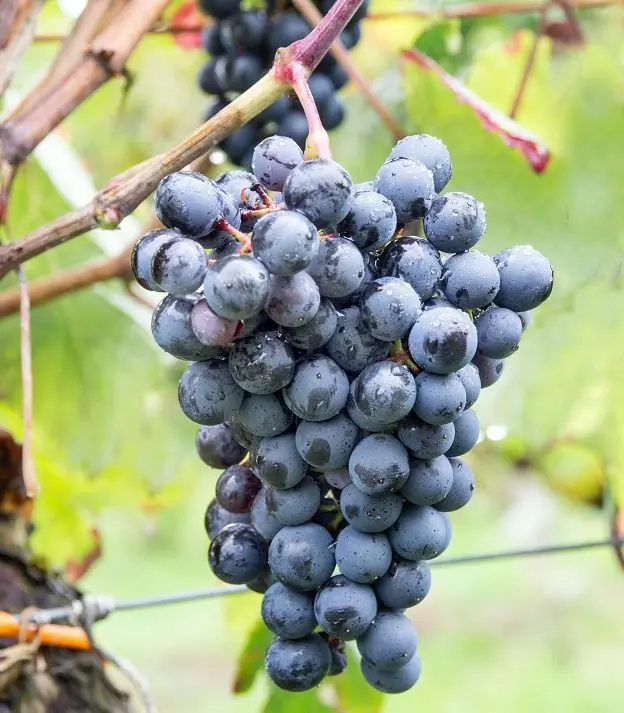Petit Verdot is a grape variety and full-bodied red wine of the same name from the Bordeaux region in southwestern France. This variety is also used for the production of the famous Bordeaux.
Wine Petit Verdot has a rich color, high tannins and a bright aroma of violets in the bouquet. Such characteristics of the variety make it a desirable component for many wines that lack brightness and taste, but in its pure form the drink is less common, although producers from other countries have learned to curb the recalcitrant character of this grape and cope with its excessive brightness.
Variety Petit Verdot brings notes of plum, lilac, blackberry, cherry, violet, lavender and wormwood to the drink, and also adds mineral tones and a slight aftertaste of gravel.

As for the history of appearance, it remains unclear. It is only known that the first official mention of the variety is about 200 years old.
Features
As already mentioned, in its pure form this wine is too bright and sharp, in France itself, most often the variety is simply added to blends, and its share does not exceed 10%. “Mono wines” from this variety are found in countries with hotter climates.
The Petit Verdot grape gravitates towards nuances of dark fruits and wild herbs, although the specific flavor will vary by region and grower.

Many winemakers age the Petit Verdot in oak barrels to soften its harshness a bit. As a result, vanilla, hazelnuts, mocha coffee are also added to the bouquet. Sometimes there are notes of damp earth and the so-called “barnyard smells”.
This wine is usually produced in a dry version with medium acidity. The cost of a bottle rarely exceeds $20.
Oenologists compare Petit Verdot to Mourvedre and Petite Sirah wines.
Production regions
Despite the fact that the birthplace of the variety is France, it only managed to truly open up outside the country.
- Spain. The local Petit Verdot is so dark it’s almost black, and it tastes like licorice and black pepper.
- Australia. The Australian variation is slightly lighter than the European ones, the color of the wine is slightly paler and more transparent, and notes of raspberry, cherry and vanilla prevail in the bouquet.
- USA. A sharp and rich wine, usually aged in oak for at least 20 months.
- Chile and Argentina. Dark wine with blackberry and blackcurrant flavors, smoke, deep roast coffee and black cardamom.
- Italy. The local variation is distinguished by brighter earthy and granite notes, as well as maximum tannins.

How to drink Petit Verdot wine
Before serving, Petit Verdot wine should be allowed to “breathe” for at least 2 hours or passed through an aerator several times.
Like any full-bodied red wine, Petit Verdot is paired with fatty meat dishes such as barbecue or pork ribs, aged cheese, a variety of spices, fried or grilled vegetables.

Interesting Facts
- The name of the variety is translated as “little green”. Most likely, because these grapes ripen later than their counterparts, and by the time of harvest, the Petit Verdot berries remained literally small and green.
- For the same reason – late ripening – the variety remained underestimated for a long time, and Petit Verdot vines were uprooted to make room for Merlot or Cabernet Franc.









